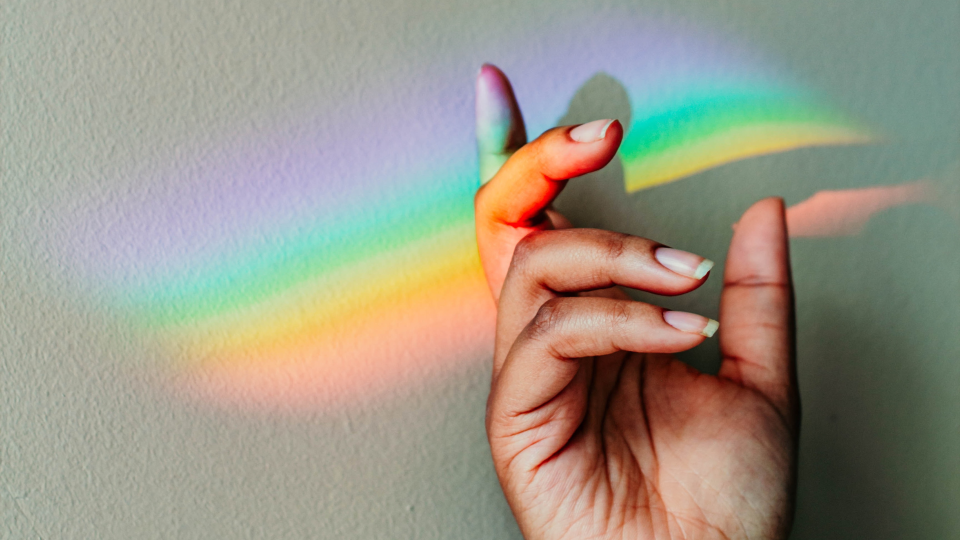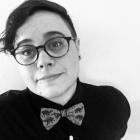
Photo by Noelle Rebekah(link is external) on Unsplash
The LGBTQIA+ community is not free from prejudice. We learned from transgender, non-binary and gender diverse (TNBGD) people in our study, the Left Out Project, to be published in the second quarter of 2023, that members of their own community are often the primary perpetrators of on and offline transphobic violence against them. The Left Out Project, supported by the Feminist Internet Research Network (FIRN), seeks to explore and understand online gender-based violence as experienced by TNBGD people in four countries, including Botswana, Rwanda, South Africa and Uganda. Through this project, we aim to centre TNBGD people’s experiences of online gender-based violence so that responses to online gender-based violence (e.g. policies) may be better informed and ensure stronger protections for TNBGD people. This article is a discussion of only some of the rich data that has been collected thus far from four African countries.
In Rwanda and Uganda, anti-homosexuality and transphobic states actively criminalise the LGBTQIA+ community. However, in countries where there are protections like Botswana and South Africa, they are also inclined towards transphobic discrimination and violence.
We often consider online spaces safer due to the anonymity and the diversity it provides. For instance, research has shown that for the LGBTQIA+ community the internet is integral for creating enabling environments to establish an online support structure and connecting LGBTQIA+ people with each other, especially in spaces where they are persecuted and unable to fully express themselves offline.1 However, the internet is a fraught space and TNBGD people also face violence online, being the targets of hate speech, misgendering and harassment for simply existing.
Transphobic violence
Transphobic harassment and violence manifest in a number of ways, which can range from verbal to physical abuse, sexual violence, and even murder. Transgender women, in particular, experience the highest rates of violence.2 In 2021, Muller et al in their nine African countries’ study reported that, “three in four transgender women (73%) had experienced a form of violence in their lifetime, and almost half (45%) in the past year.”3 Transphobia and the threat of transphobic violence have a significant impact on transgender people’s mental health.4
Our research uncovered that violence affecting TNBGD people is widespread across the four countries through systemic, cultural, religious and political influence. In Rwanda, the transgender community is at risk of violent detentions because of their gender identity. While in Uganda there are no laws that outrightly criminalise TNBGD people, but they “have been indirectly criminalised under the offences of ‘personation’ (false representation), public indecency and the criminalisation of consensual same-sex sexual acts.”5 While in Botswana and South Africa where there are some state protections, these protections do not always translate from paper to people, and high rates of homophobic and transphobic violence are still found.6 Our participants reported discrimination from healthcare professionals, being arrested, detained, sexual harassment and violence, online harassment, being targeted by transphobic groups, to name only a few. But they also reported something that we did not anticipate: violence from the LGBTQIA+ community.
Participants shared that they had experiences from lesbian and gay people of dismissal, deadnaming, misgendering, sharing of images without permission, and stalking, to name a few.
The unanticipated
In the interviews with our participants, we did not anticipate transphobia from within the LGBTQIA+ community to be so prominent. As a participant from Botswana, B1, shared with us, “We’re never ready for our allies to be [transphobic].”
Another participant from Botswana, B2, shared that they found it to be “depressing” that, “the people who are supposed to be holding your hand at that time and protecting you are the ones who are also instigating the violations against you.”
We echoed this sense, finding that we were dismayed at the presence of transphobia within the LGBTQIA+ community, primarily from lesbian and gay people. If anything, we anticipated that the LGBTQIA+ community would be far more understanding of the experiences of marginalised groups as the community is itself marginalised. However, it should not have been so strange to us as we have seen in other social movements such as Fees Must Fall, also known as the Fallist movement, in South Africa how TNBGD activists were treated by the broader movement.7
Participants shared that they had experiences from lesbian and gay people of dismissal, deadnaming, misgendering, sharing of images without permission, and stalking, to name a few. For us, this is concerning given the global rise in transphobia8 and associated hate crime-related murders that emerges from transphobia and intersecting discriminations on the basis of racism, sexism, and homophobia.9
A participant from South Africa, S4, said about transphobic violence that, “When you experience it in the community it’s so sad, because these are the people who should know better and we’re running with the baton every time. We’re being activists and advocates for our people because we are already a minority as the LGBT community.”
The TNBGD people interviewed for the Left Out Project shared a range of experiences of different forms of violence, from dismissal of lived realities to misgendering, disregard of consent and stalking.
Dismissal of lived experiences
Our participants shared how their identities and experiences had been dismissed from being told, as S6 puts it, that, “the concept [of non-binary genders] doesn’t make sense,” to being told outright that one does not look like they are TNBGD. S1 shared with us,
“… I went to a queer event… and I introduced myself as nonbinary and this very cis gay man said ‘You don't look non-binary’… It's the assumption [that] you have to look a specific way to be non-binary. So, ironically, my first form of discrimination as a trans person was from a queer person.”
There is a sense here that TNBGD identities are viewed as illegitimate or ‘not real’, and not taken as seriously.
Refusing use of pronouns and misgendering
Participants spoke about how their pronouns were not respected and/or how they were misgendered by members of the LGBTQIA+ community. This included, according to B6, “intentionally us[ing] my dead name on their social media platforms,” and as per B2, being misgendered even when “it is clear…. You know… how I address myself or how I see myself."
Sharing of images without permission
Participants spoke about how members from the LGBTQIA+ community took photographs of them and shared them without their permission. One participant, R10, said that, “it was my queer friends…they took the photos and uploaded them [online],” and the photographs drew the attention of “many people in the community.” The risk to the safety of a transgender person in Rwanda was not given any consideration by the person who took the photo and shared them. The posting of images without permission, including the case of R10, emerged mostly as a means of ridiculing TNBGD people. The consequences of this, not only as being something that in itself is explicitly harmful and cruel, is the added risk of drawing attention to a TNBGD person and the other potential violences this opens them up to, including state persecution.
Stalking
Another participant, S4, shared how they had been stalked by someone both online and offline. They said, “I’ve been stalked…that guy created 16 profiles. I’d block him on one profile and he’d create another one. I remember there was a point where he would pop up where I was.” They added, “I remember there was a point when he came to my house at 01h30 and he stayed outside my house until 03h00. It was so scary, it has been one of the worst experiences of my life, because I remember having to send my friends pictures and say, ‘If anything was to ever happen to me – today, tomorrow, any time – just know the person responsible.’”
All instances of violence shared with us were very concerning, and as the researchers on this project, we have been working through why the LGBTQIA+ community is transphobic. From conversations with our participants and among ourselves, we have two possible reasons for this transphobia: models of normativity within the community, and discrimination as self-preservation.
Models of normativity
The LGBTQIA+ community is often assumed to be a homogenous community but it is not. It is made up of multiple identities and lived experiences that are not only limited to sexual orientation or gender identity but also intersect with geography, race, class, etc. This intersectionality10 needs to be accounted for within the LGBTQIA+ community or it is at risk of presenting itself as a homogenous community which inevitably defaults to presenting the experiences of all LGBTQIA+ people through the lived experiences of white middle-class cisgender gay men.11
It is better to think of the LGBTQIA+ community as consisting of multiple communities. When the community is thought of this way, it is then easier to understand why some lesbian and gay people pushback against perceived otherness and perpetuate and/or do not speak out against transphobic violence – they are taking care of the interests of their own communities.
With the pursuit of equal rights, lesbian and gay people have presented themselves as non-threatening to heterosexual culture, and come to be assimilated into this culture.12 They may adopt the norms and values that are associated with a “good heterosexual citizen,”13 and enforce what Duggan termed homonormativity.14 So in order to protect this privilege and power, they work to maintain the heterosexual norm and do not work to protect and accept other queer identities.15
TNBGD participants in Rwanda and Uganda bemoaned about how their outward appearances have been enough reason for them to be excluded from their own queer circles for fear of being associated with TNBGD people. Some examples from our Rwandan and Ugandan participants:
R4 says, “[…]We also face some discrimination from fellow LGBT members... Sometimes when they see you, as a trans, sometimes they don't feel like walking with you. Maybe because of [our] physical appearance or the way we dress up […].”
It is better to think of the LGBTQIA+ community as consisting of multiple communities. When the community is thought of this way, it is then easier to understand why some lesbian and gay people pushback against perceived otherness and perpetuate and/or do not speak out against transphobic violence.
Whereas, U1 from Uganda, adds, “LGB people don’t want to be with trans people. Even we trans, don’t connect with MSM people16 too much because we know they don’t want to be like us. They even don’t want us to go to their shelters; to do dialogues because we dress like that. They feel like we are not together with them yet we are in the same community of LGBT persons.”
Discrimination as self-preservation
In many instances, it was seen that the lesbian and gay people would discriminate against TNBGD people or would project transphobia as a way to protect themselves and steer clear of any attention on them in conservative societies. In conversation with a participant, R5, from Rwanda, they told us that, in Rwanda where there are no legal protections for LGBTQIA+ people, lesbian and gay people will discriminate against transgender people so as not to draw attention to themselves, to protect themselves and their families. Transphobia in this instant is used as a protective form of discrimination to distract others from the sexual orientation and identity of lesbian and gay people.
Call to action
TNBGD people who participated in our study, The Left Out Project, have told us over and over that they experience discrimination from our own LGBTQIA+ community. It is their experiences that have made it even more pressing that we focus on TNBGD experiences of online gender-based violence and do not group them together with the experiences of cisgender women because to do so is to risk rendering these experiences invisible.
As the LGBTQIA+ community, we are a divided community, and although we experience various forms of discrimination from cisgender, conservative and heterosexual individuals, we fail to interrogate where our own fears come from. Members of the LGBTIAQ+ community often gatekeep who may belong and model straight behaviour to pass and be accepted by their peers. We may come to suppress our sexuality at the behest of others and then police queerness based on heteronormative ideas of acceptance.
Transphobia in this instant is used as a protective form of discrimination to distract others from the sexual orientation and identity of lesbian and gay people.
We have come too far to disassociate with the struggles of TNBGD people everywhere. Their fight is our fight if we are to tackle the levels of violence which TNBGD individuals face both in online and offline spaces. Denying TNBGD people their rights and dignity should shame us all who call ourselves a part of the rainbow. When participants indicate that they are asked to perform heteronormative roles in public by their own, it is a form of self-hating and we should all fight against displaying and acting on the impulse of how heteronormativity has conditioned us to act and behave.
It is our duty to speak up and out whenever we witness discrimination and transphobia from friends, family and colleagues who are part of the LGBTQIA+ community. Let us start cleaning our own house and become the safe space we often talk about but seldom create.
Footnotes
- 1. McLean, N. 2020. Creating safe spaces: Digital as an enabling environment for TNB people. In Kattari, S.W.; Killian, M.K.; Kattari, L. and Walls, N.E. Walls (Eds) Social Work and Health Care Practice with Transgender and Nonbinary Individuals and Communities: Voices for Equity, Inclusion, and Resilience; McLean, N. 2018. "Rethinking publics and participation in a digital era: A case study of HOLAA! and African queer women’s digital interactions", In Agenda, pp 1 – 6; McLean, N and Mugo, T.K. 2015. ‘The digital age: A feminist future for the queer African woman’. In IDS Bulletin. Vol 46 (4). Pp 97 – 100.
- 2. Müller, A., Daskilewicz, K., Kabwe, M.L., Mmolai-Chalmers, A., Morroni, C., Muparamoto, N., Muula, A.S., Odira, V., Zimba, M. and the Southern and Eastern African Research Collective for Health (SEARCH). 2021. Experience of and factors associated with violence against sexual and gender minorities in nine African countries: a cross-sectional study. BMC Public Health 21, 357. https://doi.org/10.1186/s12889-021-10314-w;(link is external) Graaff, K. 2021. The Implications of a Narrow Understanding of Gender-Based Violence. Feminist Encounters: A Journal of Critical Studies in Culture and Politics. Vol 5(1).
- 3. Müller et al, Experience of and factors associated with violence against sexual and gender minorities in nine African countries: a cross-sectional study, p.4.
- 4. Lanham, M., Ridgeway, K., Dayton, R., Castillo, B.M., Brennan, C., Davis, D.A., Emmanuel, D., Morales, G.J., Cheririser, C., Rodriguez, B., Cooke, J., Santi, K., and Evens, E. 2019. ‘‘We’re Going to Leave You for Last, Because of How You Are’’: Transgender Women’s Experiences of Gender-Based Violence in Healthcare, Education, and Police Encounters in Latin America and the Caribbean. In Violence and Gender, Vol 6 (1). Pp. 37-46. http://doi.org/10.1089/vio.2018.0015(link is external)
- 5. United Kingdom Government, 2022. Country policy and information note: sexual orientation and gender, Uganda, February 2022, https://www.gov.uk/government/publications/uganda-country-policy-and-inf...(link is external)
- 6. McLean, N. (2020). Creating safe spaces: Digital as an enabling environment for TNB people. In Social Work and Health Care Practice with Transgender and Nonbinary Individuals and Communities (pp. 331-342). Routledge; Ibid; Mhaka, T. 2021. Africa’s LGBTQ communities need more protection and support. In Al Jazeera, 30 April 2021. https://www.aljazeera.com/opinions/2021/4/30/africas-lgbtq-communities-n...(link is external)
- 7. Tigist Shewarega Hussen’s doctoral study unpacks this further in the critical discussion of tokenistic representation of queer and trans bodies within the Fees Must Fall movement, see Hussen, T.S (2022), Radical possibilities at the crossroads of African feminism and digital activism, doctoral thesis, University of the Western Cape: https://etd.uwc.ac.za/handle/11394/9250(link is external)
- 8. Human Rights Campaign. 2020. Fatal Violence Against the Transgender and Gender Non-Conforming Community in 2020. Retrieved 29 March 2021 from https://tinyurl.com/humanrc2020(link is external)
- 9. Ibid.; It bears noting that police reports and crime statistics do not accurately reflect the degree of transphobic crime due to the misgendering of transgender people by police, the criminal justice system and the media.
- 10. See Crenshaw, K., Demarginalizing the Intersection of Race and Sex: A Black Feminist Critique of Antidiscrimination Doctrine, Feminist Theory and Antiracist Politics. University of Chicago Legal Forum, 1989(1), 139-167. https://chicagounbound.uchicago.edu/uclf/vol1989/iss1/8(link is external)
- 11. McLean, N., (Re)considering the Rainbow. In International Journal of Critical Diversity Studies, Vol 2(1), 2019. Pp 24-40.
- 12. McLean, N., (Re)considering the Rainbow. In International Journal of Critical Diversity Studies, Vol 2(1), 2019. Pp 33. Lynch, I. and Maree, D. J. F. Negotiating heteronormativity: Exploring South African bisexual women’s constructions of marriage and family. Feminism & Psychology, 23(4), 2013. Pp 459–477.
- 13. McLean, N., (Re)considering the Rainbow. In International Journal of Critical Diversity Studies, Vol 2(1), 2019. Pp 33. Payne, R., and Davies, C. (2012). Introduction to the special section: Citizenship and queer critique. Sexualities, 15(3/4), 2012. Pp. 251–256.
- 14. Duggan, L. The new homonormativity: The sexual politics of neoliberalism. In R. Castronovo & D. Nelson (Eds.), Materializing democracy: Toward a revitalized cultural politics (pp. 175–194). Durham, NC: Duke University Press, 2002.
- 15. Oswin, N. Critical geographies and the uses of sexuality: deconstructing queer space. Progress in Human Geography, 32(1), 2008. Pp. 89–103. See also Puar, J. Rethinking homonationalism. International Journal of Middle East Studies, 45(2), 2013. Pp. 336–339.
- 16. MSM people include gay, bisexual and other men who have sex with men.
- 1026 views







Add new comment